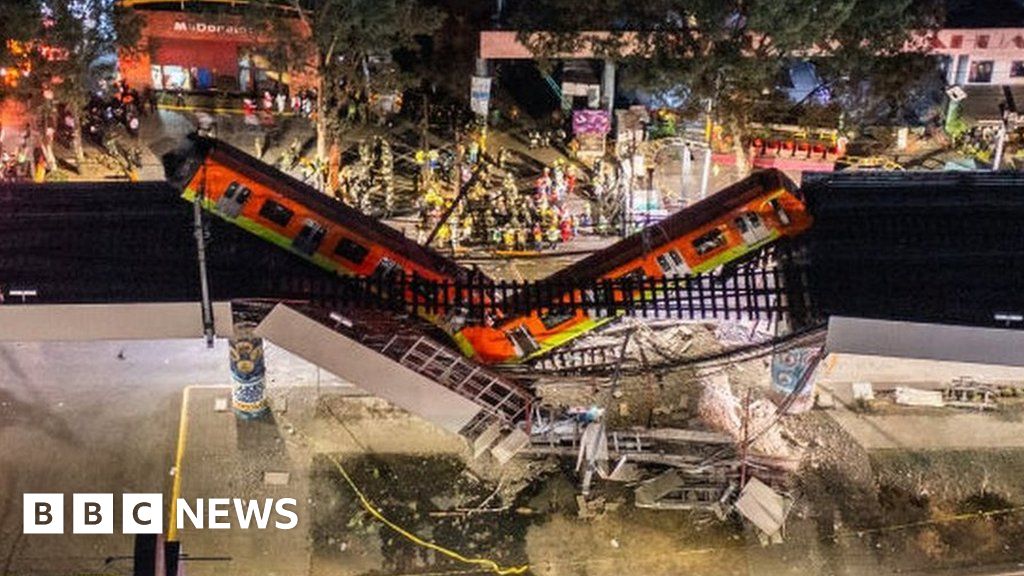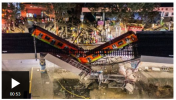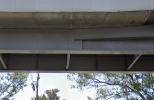Litany of construction faults flagged years before Mexico metro bridge collapse
05 May, 2021 By
Catherine Kennedy
Poor materials, sleeper defects and inadequate supervision during construction are among faults previously identified on Mexico City’s metro line 12 which collapsed onto a busy road on Sunday night.
At least 23 people were killed and dozens more injured after
an overpass on the line collapsed onto traffic near Olivos station in the southeast of the city.
Faults in the $1.7bn (£1.2bn) line had been highlighted six years ago, in a 2015 report by the metro line’s investigative committee, which was set up by the Mexican Government after construction faults were discovered at 11 of the line's stations.
It is unclear whether the faults have been rectified since the 2015 report.
In the line's underground section, it was found that material used below the rail track was made up of gravel and sand instead of concrete. This can cause the tracks to become unstable.
According to the report, “hidden defects” were also detected in “various elements of the fixed installations”, such as the sleepers, while the ballast was “not optimal to absorb the stresses in tight curves”.
The report adds: “Atypical vibrations and vertical movements were detected in all curves with radii less than 300m.”
In addition, construction was poorly supervised and work began without a comprehensive final design. The report says there were “important flaws in the conception and planning of the project” and “poor, hasty and incomplete certification on the functionality and safety of the line”.
The investigation was ordered after Mexico City's government was forced to suspend service at 11 of the 20 stations on line 12 in March 2014 to repair structural defects. These were due to rail unevenness, high levels of vibration and wear and tear.
At the time of the repairs, the line had been operational for less than two years. It opened in October 2012, with the project's tunnel boring machine having begun work in May 2010.
Independent bridge consultant Simon Bourne told
NCE that “sadly, throughout the world, the lack of construction supervision has become commonplace over the last 20 years”.
He added: “Generally, in most countries, detailed designs are always checked or reviewed carefully, although not everywhere. But construction supervision has effectively disappeared as a tool everywhere."
Following the bridge failures in
Florida and
Genoa, in 2019 Bourne published a paper in
The Structural Engineer which highlighted this issue.
It says: “The role of site supervision has declined enormously over the last 20 years, as contractors operate quality assurance systems. However, this process of self-certification may leave projects exposed to unscrupulous practices, to hasten programme or reduce costs. This is certainly a major issue (and a factor in failures) in the developing world and there is growing evidence that it is also becoming a serious issue in developed countries.”
The paper adds that a balance needs to be found between “achieving best value while not compromising integrity or safety”, and calls for all bridges to undergo independent design checks and independent construction checks through a "competent site supervision process".
Such site supervision has become “increasingly rare worldwide”, the paper says, “even though its cost is small compared to that of the overall project”.
In the case of the Mexico City collapse, Bourne said that given the combination of poor construction materials and this global trend for a lack of construction supervision his “main suggestion” is that the collapse was due to the failure of the concrete top slab at midspan, “presumably due to poor quality materials and/or poor workmanship (resulting in poorly compacted concrete)”.
He added: “How it survived eight years is an issue, as there seems to have been only one passenger train on the deck at the time, whereas the span would have been designed for two, heavier goods or service trains.
"One can only assume that some final higher level of impact loading and/or some further deterioration of the poor concrete finally pushed it over the edge. Clearly, the issue of sub-standard materials and/or poor workmanship looks like an issue on this metro line.”
The 25km line has 20 stations - eight of them below ground - and provides service in seven Mexico City boroughs. The contractor on the scheme was Mexican firm Ingenieros Civiles Asociados (ICA).
Bourne's key points
- Bridges generally fail short-term during construction (eg Florida) due to poor design, poor details or poor materials/workmanship - limited design checks and lack of proper independent construction supervision are usually contributory.
- The second major cause of bridge failures is longer-term (eg Genoa), primarily due to poor maintenance regimes over many years.
- Here, in the medium-term, poor design is probably less of an issue, but residual construction defects combined with the increasing effect of little, or no, maintenance could combine to cause a failure of this nature.



